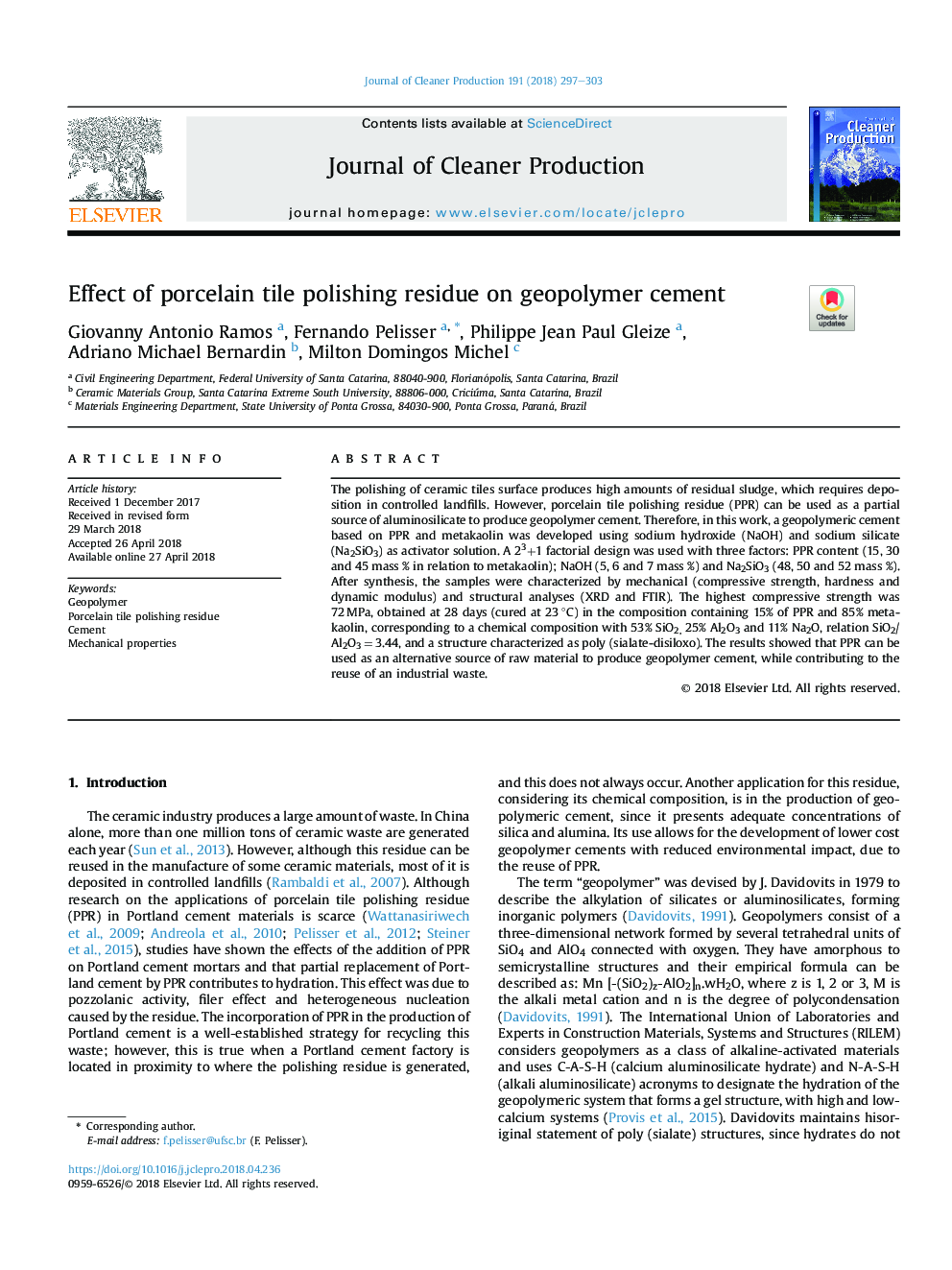| Article ID | Journal | Published Year | Pages | File Type |
|---|---|---|---|---|
| 8094795 | Journal of Cleaner Production | 2018 | 7 Pages |
Abstract
The polishing of ceramic tiles surface produces high amounts of residual sludge, which requires deposition in controlled landfills. However, porcelain tile polishing residue (PPR) can be used as a partial source of aluminosilicate to produce geopolymer cement. Therefore, in this work, a geopolymeric cement based on PPR and metakaolin was developed using sodium hydroxide (NaOH) and sodium silicate (Na2SiO3) as activator solution. A 23+1 factorial design was used with three factors: PPR content (15, 30 and 45 mass % in relation to metakaolin); NaOH (5, 6 and 7 mass %) and Na2SiO3 (48, 50 and 52 mass %). After synthesis, the samples were characterized by mechanical (compressive strength, hardness and dynamic modulus) and structural analyses (XRD and FTIR). The highest compressive strength was 72â¯MPa, obtained at 28 days (cured at 23â¯Â°C) in the composition containing 15% of PPR and 85% metakaolin, corresponding to a chemical composition with 53% SiO2, 25% Al2O3 and 11% Na2O, relation SiO2/Al2O3â¯=â¯3.44, and a structure characterized as poly (sialate-disiloxo). The results showed that PPR can be used as an alternative source of raw material to produce geopolymer cement, while contributing to the reuse of an industrial waste.
Related Topics
Physical Sciences and Engineering
Energy
Renewable Energy, Sustainability and the Environment
Authors
Giovanny Antonio Ramos, Fernando Pelisser, Philippe Jean Paul Gleize, Adriano Michael Bernardin, Milton Domingos Michel,
